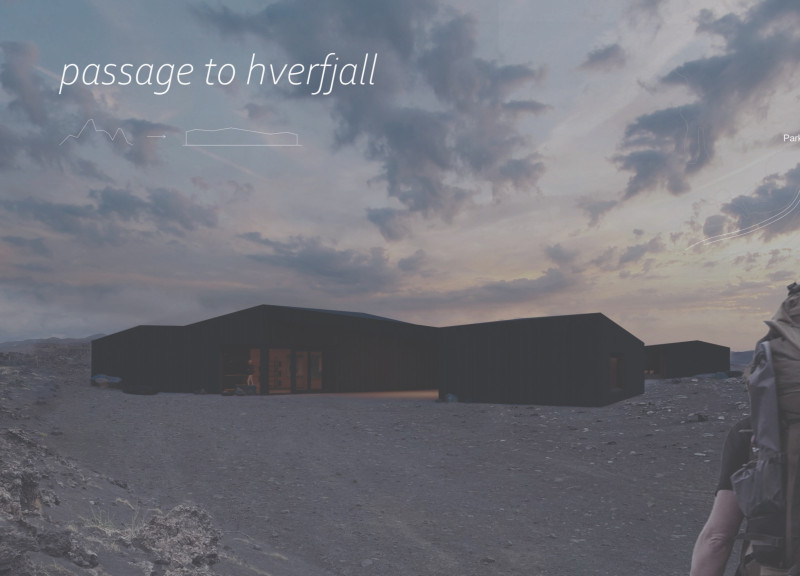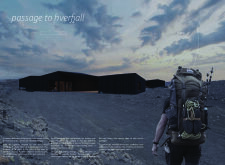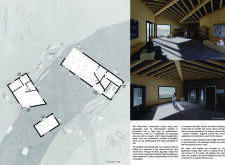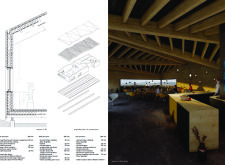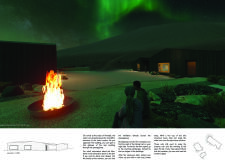5 key facts about this project
The primary function of the visitor center is to facilitate a range of activities that enhance the visitor experience. It includes a café, exhibition areas, information desks, and additional amenities that cater to both individuals and groups exploring Hverfjall. With its dual-part layout, the design effectively segregates public and service functions while maintaining an intuitive flow, guiding visitors through the space in a manner that enriches their understanding of the site. The careful arrangement of spaces promotes engagement, encouraging exploration while providing necessary comfort and convenience.
From a design perspective, the project is characterized by its sensitivity to the surrounding environment. The use of local materials serves a dual purpose: it ensures sustainability while also echoing the natural textures and colors of the landscape. The incorporation of charred timber cladding, which is durable and aesthetically pleasing, highlights a commitment to environmental stewardship. This material not only protects against the elements but also pays homage to traditional building practices, demonstrating a respect for local craftsmanship. Inside, pine wood paneling creates a warm and inviting atmosphere, balancing the robust exterior with an intimate interior experience.
Architecturally, the project stands out due to its unique approach to integrating indoor and outdoor spaces. Large, strategically placed windows offer panoramic views of Hverfjall and the surrounding areas, blurring the lines between the interior and exterior realms. This emphasis on natural light not only enhances the aesthetic quality of internal spaces but also reduces reliance on artificial lighting, fostering a connection to the landscape. Outdoor areas, including pathways and a central gathering spot with a fire pit, provide opportunities for social interaction and reflection amid the stunning backdrop of nature.
The visitor center also exhibits a commitment to sustainability through passive design strategies. The building's orientation and the thoughtful arrangement of spaces maximize natural ventilation and thermal comfort, reducing energy consumption. This focus on ecological principles demonstrates how architecture can adapt to and respect its environment while providing functional benefits.
Ultimately, the Hverfjall visitor center encapsulates a blend of functionality, sustainability, and aesthetic harmony with its surroundings. It serves as a new focal point for visitors and the local community, inviting exploration and education in an engaging architectural setting. For those interested in a deeper understanding of this project, reviewing the architectural plans, sections, and design details will illuminate the thoughtful considerations that have shaped this remarkable architectural endeavor. Exploring the unique design ideas and approaches leveraged in this project will offer valuable insights into the interplay between architecture and the environment in a region defined by its geological wonders.


